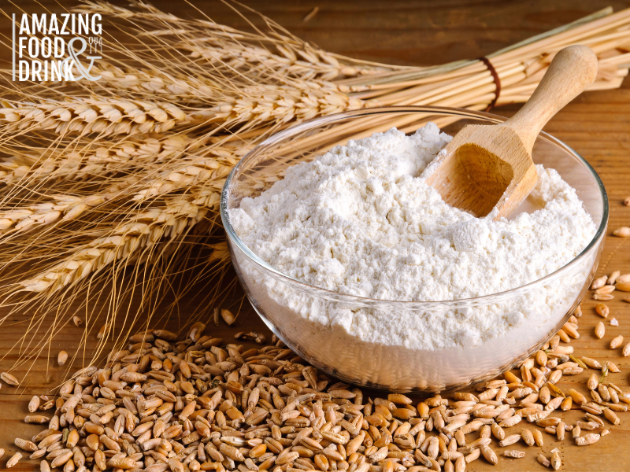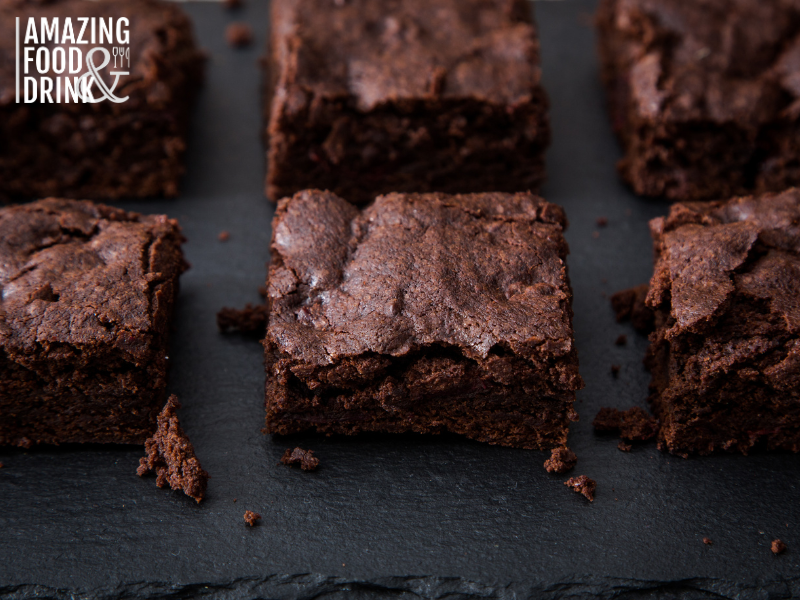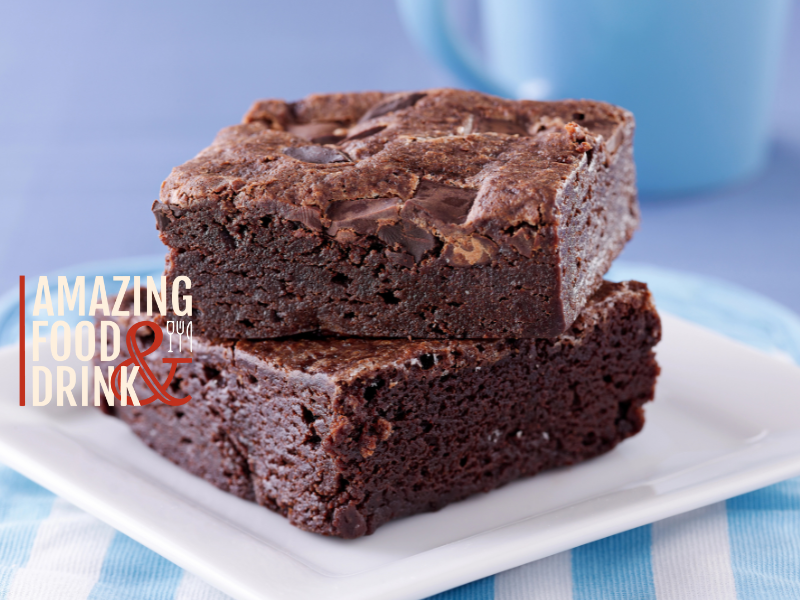Indulgence Redefined: Decadent Gluten-Free, Dairy-Free Brownies
Among the nutritional preferences and restrictions of today, the quest for delicious treats that cater to various dietary needs has become increasingly prevalent. Among the myriad of options, a gluten-free and dairy-free brownie cube stands out as a testament to the innovation and creativity in the culinary world.
Enter the delectable universe of no-gluten, no-dairy brownies—a delightful intersection of dietary consciousness and irresistible indulgence. In this article, we embark on a tantalising exploration of these fudgy, decadent creations that redefine the boundaries of traditional brownies. From the careful selection of alternative flours to the artful combination of dairy-free ingredients, these little brown cubes prove that dietary restrictions need not compromise flavour and texture.
Let’s hop into it.
What is Gluten?

Gluten is a mixture of proteins typically found in grains like wheat, barley, and rye. It acts as a glue-like substance, providing elasticity to dough and contributing to the structure of baked goods.
Gluten consists of two primary proteins: gliadin and glutenin. When flour is mixed with water, such proteins combine to form a network that gives bread and other baked products their characteristic chewy texture.
While gluten is a key component in many staple foods, like bread, pasta, and baked goods, some individuals may be sensitive or intolerant to it. In particular, those with celiac disease, a genetic autoimmune disorder, experience an immune reaction to gluten, causing a huge damage to the lining of the small intestine. For these individuals, embracing a no-gluten diet is crucial to managing their condition and maintaining their health.
Besides, some people may have non-celiac gluten sensitivity, a condition characterised by gastrointestinal and other symptoms that improve with a gluten-free diet, even though they do not have celiac disease.
A third type of people, who pretty much do not suffer from celiac disease nor do they have any gluten sensitivity, choose to eliminate gluten anyway, promoting a healthier lifestyle. Those may already be experiencing digestive discomfort or bloating when consuming gluten, so they decide to cut down on it.
As a result of such a widespread ‘not very pleasant’ gluten reputation and many people’s attempts to reduce or eliminate it altogether, more and more less to no-gluten products and recipes are emerging and gaining popularity.
Today’s delicious dessert is one famous example.
Gluten-Free, Dairy-Free Brownies

Brownies are a popular and indulgent American dessert, either square or rectangular in shape, with a rich, dense, and fudgy texture, made from ingredients such as chocolate, butter, sugar, eggs, and flour, and often include nuts or other flavourings. The taste is quite a delightful balance of sweetness and cocoa, often complemented by the buttery richness of the ingredients.
They are baked and enjoyed in various forms, from classic plain squares to variations with added ingredients like nuts, caramel, or swirls of different flavours.
Yet, just because they contain flour and butter does not mean people sensitive to gluten cannot enjoy them. In fact, one of the great things about this dessert is that it can be made using no gluten or dairy whatsoever and still have a distinct, rich, and chocolatey flavour without compromising on texture.
Flour Alternatives

To make delicious, healthy, no-gluten brownies, we replace the regular wheat, all-purpose flour with any no-gluten alternative, and there are plenty of them. These are various types of flours made from other grains or ingredients such as almond flour, coconut flour, oat flour, rice flour, or quinoa flour. Any of these is a 1:1 substitute for all-purpose flour.
Another type of flour that has no gluten is Teff flour, which is made from Teff grains. These are among the smallest in the world and highly contribute to the fine texture of the flour. Teff flour has a mild and nutty flavour, adding a unique taste to baked goods. It can be used as a replacement for all-purpose flour to make both sweet and savoury recipes.
A third type of flour that can be used to make this dessert is buckwheat flour. It is made by grinding the seeds of the buckwheat plant.
Dairy Alternatives
The original brownie recipe does not incorporate any plain milk unless one wants to give the dessert a soft texture. What the dessert does use is butter, which is just another dairy product. Sometimes the chocolate used for the recipe may have milk as well.
So, all you need to do is just replace the butter with oil, which will actually make them tender, and make sure that whatever chocolate you are using is just dark with absolutely no milk.
Taste and Texture
So what exactly do this “flourly modified” dessert taste like? You must be wondering if they taste anywhere near the original fudgy, rich counterparts.
Rest assured. These little brown heavenly desserts, even after excluding regular flour and substituting butter with oil, are still rich, moist, and dense with a decadent taste and fudgy consistency. The gooey inside is full of chocolate flavour that makes every bite indulgent.
Other Adjustments
Brownies are even more versatile as they can be made vegan. All there is to do is replace the egg with other vegan baking substitutes. This switch does not change the taste or texture of your dessert, by the way. One of these famous substitutes is flax eggs. These are ground flaxseeds, which become gelatinous once they absorb water. They make a great egg substitute.
Ingredients
Making no-gluten, dairy-free brownies is a straightforward process, and the result can be just as delicious and satisfying as traditional ones. Here is what you are going to need and a simple recipe to make them.
- 1 cup of gluten-free flour (or a blend of multiple types)
- 1/2 cup of cocoa powder
- 1/2 teaspoon of baking powder
- 1/4 teaspoon of salt
- 1 cup of dairy-free chocolate chips
- 1/2 cup of coconut oil or dairy-free margarine
- 1 cup of granulated sugar
- 2 tablespoons of ground flaxseed
- 6 tablespoons of water
- 1 teaspoon of vanilla extract
- 1/2 cup of chopped nuts (Optional)
Recipe
Preheat your oven to 175°C. Grease or line a 20×20-cm baking pan with parchment paper.
Start by making the flax eggs, for these usually take some time to thicken. In a small bowl, add the ground flaxseed and water, then stir well. Allow the mixture to sit for a few minutes until it thickens. Then, in a medium-sized bowl, add your preferred gluten-free flour, baking powder, cocoa powder, and a sprinkle of salt. Mix and set them aside.
In a heatproof bowl, melt the dairy-free chocolate chips with coconut oil or dairy-free margarine. This can be done in a microwave or using a double boiler on the stovetop. Stir until smooth and well combined.
In a large mixing bowl, place the sugar, flax eggs, and vanilla extract, then add the melted chocolate mixture and whisk well until smooth. Then, combine all the dry ingredients with the wet ones, mixing until just combined. Be careful not to overmix. If desired, fold in chopped nuts or additional dairy-free chocolate chips.
Pour the brownie batter into your parchment-paper-covered pan and spread it evenly. Bake your mighty brownies in the preheated oven for 20 to 25 minutes or long enough until a toothpick or maybe a fork inserted into the centre of the brownies comes out, without moist crumbs (not wet batter). For chewy brownies, make sure to underbake them slightly.
Let your dessert completely cool in the pan before cutting them into squares. Keep them in an airtight container and leave them at room temperature, where they can last around four to five days. For maximum freshness, remember to keep that container sealed tightly!
You can also store them in the fridge for up to seven days or for longer when placed in the freezer.
Conclusion
Gluten-free, dairy-free brownies are more than just a substitution for their traditional counterparts; they are a celebration of diverse tastes and preferences. The careful selection of alternative flours and dairy-free ingredients showcases the versatility of gluten-free baking, proving that indulgence knows no bounds.
Whether you are embracing a gluten-free lifestyle, navigating dairy intolerance, or simply seeking a new culinary adventure, these brownies beckon with their rich, fudgy allure. In every bite, they redefine what is possible, demonstrating that dietary-conscious choices can coalesce seamlessly with the decadent pleasures of a classic dessert.
FAQs
1. Which gluten-free flour is best for brownies?
Common gluten-free flour for brownies includes almond flour, coconut flour, rice flour, and a gluten-free all-purpose flour blend. Yet, you have to experiment yourself to find the one that works best for your taste preferences.
2. What egg substitutes can I use in gluten-free, dairy-free brownies?
You can use various egg substitutes like flax eggs, chia eggs, or commercial egg replacers in gluten-free, dairy-free brownie recipes. These substitutes help bind the ingredients together.
3. Are there any gluten-free, dairy-free chocolate options?
Many dark chocolate brands are naturally gluten-free and dairy-free. However, you should always look at the ingredient list to make sure there are no added dairy or gluten-containing ingredients.
4. Why do gluten-free brownies sometimes have a different texture?
Gluten-free flours often have different properties than wheat flour, affecting the texture of the brownies. So, you may want to experiment with different gluten-free flours or flour blends to find the texture you prefer.
5. How can I make gluten-free, dairy-free brownies more moist?
Use ingredients like applesauce, mashed bananas, or yoghurt alternatives to add moisture to gluten-free, dairy-free brownies. Adjusting the baking time can also help prevent over-drying.

